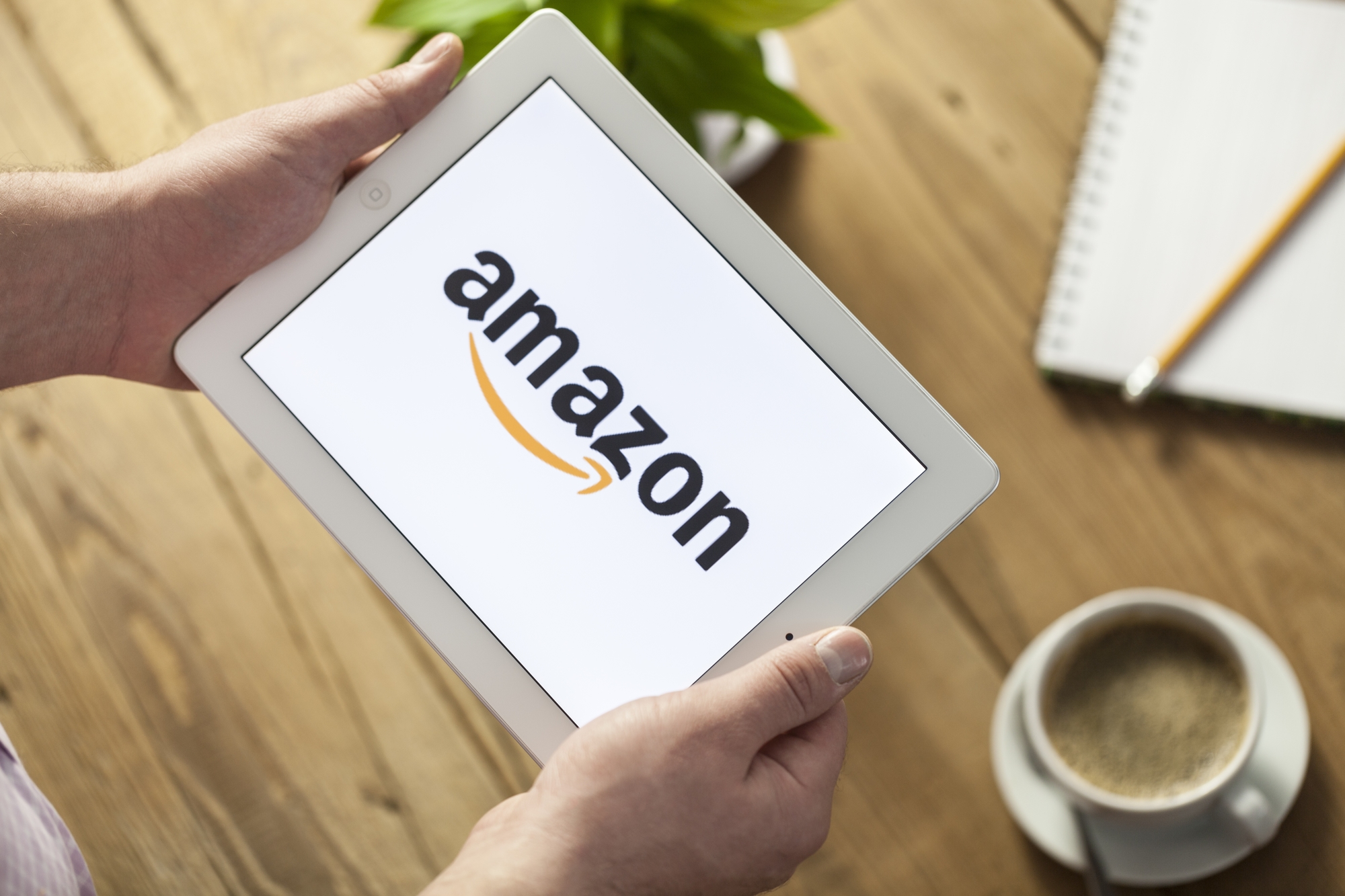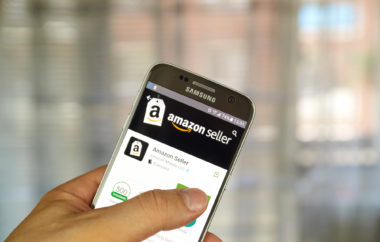Podcast: Download
Subscribe: Apple Podcast Google Podcasts Spotify
Visit our Marketing Nerds archive to listen to other Marketing Nerds podcasts!
How can you kick ass at Amazon SEO? In this episode of Marketing Nerds, Amazon and e-commerce expert Robyn Johnson joins SEJ Executive Editor Kelsey Jones to share the latest insights and best practices for Amazon SEO. Robyn and Kelsey discuss:
- The black hat Amazon SEO practices that Amazon has recently started cracking down on
- What statistics you can view for your product pages
- What’s coming next for Amazon sellers in 2017 (hint: voice search will be huge!).

How is doing SEO for Amazon different from other platforms?
Robyn: Everything in Amazon is very structured and data-based. There’s some pieces of data that are involved in your organic search then there’s some pieces, like the bullets and descriptions, which they tell us are not. Some people have seen that it can make a difference, but for sure, it plays a role in PPC and Amazon sponsored products. The biggest thing is knowing which pieces of structured data you really need to focus on and using the style guidelines.
They don’t tell us a lot about how the algorithm works. They don’t announce changes. We don’t get fuzzy animals like penguins and panda bears. We just notice, like one day everybody will be on Facebook saying, “Something changed. Does anybody know because we have to try to figure it out.”
What’s interesting about Amazon is it’s a very capitalistic search engine. It used to be that it was really easy to trick. It used to be, you could buy some fake reviews, you put out a promo code when things were free, and then it would increase that best seller rank so you were getting more sales and that would cause you to have an organic search lift.
However, they recently made some changes where those hacks are not working. They’re actually banning people for them. All those fake reviews they bought, a lot of them are disappearing. Especially in 2016, people have had to really readjust some of the strategies that used to work for Amazon SEO that no longer work.
Kelsey: That was something I wanted to talk to you about — black hat SEO for Amazon. It’s good to see they’re recognizing that people are trying to manipulate it, and kind of clean it up. I guess it’s good from a holistic standpoint, maybe not so good for the sellers.
Robyn: It’s good for the quality sellers. It’s good for the people that I’m rooting for.
Kelsey: There you go.
Robyn: Amazon is a very customer-obsessed culture. There’s a couple of things that really dictate everything — from the way the search engine works to the way you can interact with their support team.
The most important thing as a seller on Amazon is to be customer-obsessed, to take ownership. They expect you to take a deep dive. They expect you to have knowledge on the platform. When you’re putting data into their catalog, they can see who put that information in there. Their algorithms are very complicated. They’re just now starting to catch up with some of the black hat things that happen. But know that if you want to stay selling on Amazon for a long period of time, white hat is the way to go. Amazon does not give a lot of second chances. Once you’re banned, you can be banned for life.
It can be an incredible income stream. There’re so many ways to win. If you can make your listing a great customer experience, it will attract the right buyers by having targeted keywords. You’re going to do better in the long run by giving customers a great experience and having them leave you with great reviews. Some of those sponsored products that people click won’t even run unless Amazon deemed you’re relevant to that search term.
Is there a lot of data that sellers can see, like changes in listing position, or how many clicks you get on search results? Does Amazon show you that data at all?
Robyn: The only way you can get their actual search terms is by using Amazon sponsored products. However, if you go to Reports, then you go to Sales Business Reports, there’s a report called Sales and Traffic by Child. When you get into that report, you can actually see how many page views versus sessions you had, how many orders you’ve had, and you can look at your unit section percentage. Depending on the niche that you’re in, there’s no target number. We want it, for sure, at least in the double digits. We like to see that it’s at least 20, 30 percent on most of our products. We know some people that have much higher units while some people have lower. It’s going to depend on the competitiveness of your niche. That can be how you can tell if your list is converting or just not getting the traffic it needs.
You can also see your Buy Box percentage in that report. The reason that’s important is you actually cannot run sponsored products unless you’re getting the Buy Box. If you have somebody who’s undercutting you on price, you might not get it, or let’s say you put the MSRP at $20 and you’re selling it for $40, Amazon could suppress the Buy Box. Nobody gets the Buy Boxes because it’s overpriced and we’re afraid it will be a bad experience for the customer.
What are some ways you can compete with other people selling the same product? How do you stand out from multiple sellers for the products you’re offering?
 Robyn: The biggest thing is to make sure your listing is optimized for the customer. Anybody listening to the show knows how important mobile is. There’s also a lot of desktop users. The biggest thing is to make sure your title is optimized for the user and follows style guidelines.
Robyn: The biggest thing is to make sure your listing is optimized for the customer. Anybody listening to the show knows how important mobile is. There’s also a lot of desktop users. The biggest thing is to make sure your title is optimized for the user and follows style guidelines.
For photos, make sure they really demonstrate your product. You want to make sure they’re at least 1001 pixels on the shortest side so they’re optimized for mobile, and they’ll come out well for thumbnails on mobile.
Make sure that both the bullet points and the description are easy to read and benefit the customer. It used to be that we would just focus on the bullets because on the desktop version, the bullets are above the fold. However, on mobile, the description comes up before the bullets. It’s important that you really manage both.
On the back end, make sure you maximize all of the keywords. One of the things that makes Amazon different from other search engines is you don’t need to repeat any words that are in the title. You don’t need to put commas in, you don’t have to worry about order as much. You want to put it in an order that makes sense, but to do ‘white chocolate fudge’, it will pull up ‘chocolate white fudge’ as well. The look will slightly be different, but you don’t have to have ‘white chocolate fudge’ or ‘chocolate fudge white,’ even though that would be kind of a weird example. You don’t have to have every variation. You can map out 5,000 characters for each one of those. Really maximize that as much as you can.
There’s tools like merchant words, keyword inspectors, and reverse search. You can see somebody else’s ranking or get an idea for keywords that you haven’t thought of before. Merchant words will give you estimated search volumes so you can know which keywords you want to focus on and sometimes give you ideas for other ones. For keywords, it looks like there’s only space for five words, but on the seller central side, you can really put 5,000 characters, sometimes more. Keep going until you get that red alert that says you’ve passed the maximum number of characters. That’s really the best way to out-market.
Where do you see Amazon going in 2017?
Robyn: One thing you want to watch is Amazon voice search. There’s a new badge that came out and people were wondering what it was. If you see that Amazon’s choice badge, you’re coming up as the voice search for results, for things like Echo. That’s going to be important. They are also working on trying to eliminate some of the bad actors that are on there. They’re going to really be focusing on counterfeit and fake reviews. They sent out warnings to many people on the platform. Take the time to learn Amazon right. Color within the lines and you will be a value seller for them, and you’re going to make a lot more money in the long run.
To listen to this Marketing Nerds Podcast with Kelsey Jones and Robyn Johnson:
- Listen to the full episode at the top of this post
- Subscribe via iTunes
- Sign up on IFTTT to receive an email whenever the Marketing Nerds podcast RSS feed has a new episode
- Listen on Stitcher, Overcast, or Pocket Casts
Think you have what it takes to be a Marketing Nerd? If so, message Danielle Antosz on Twitter, or email her at danielle [at] searchenginejournal.com.
Visit our Marketing Nerds archive to listen to other Marketing Nerds podcasts!
Image Credits
Featured Image: Paulo Bobita
In-post Image #1: billiondigital/DepositPhotos
In-post Image #2: dennizn/DepositPhotos

![How to Kick Ass at Amazon SEO With Robyn Johnson [PODCAST]](https://www.searchenginejournal.com/wp-content/uploads/2017/01/SEJ-marketing-nerds-EP123-banner.jpg)



